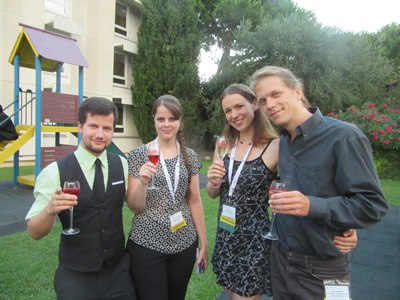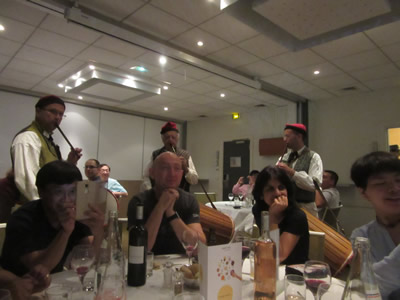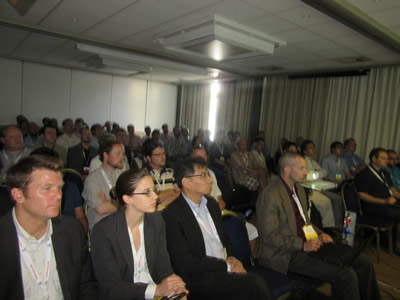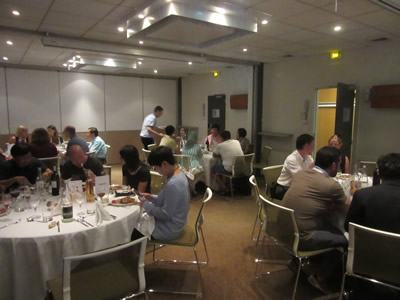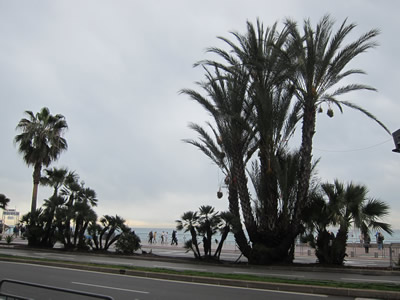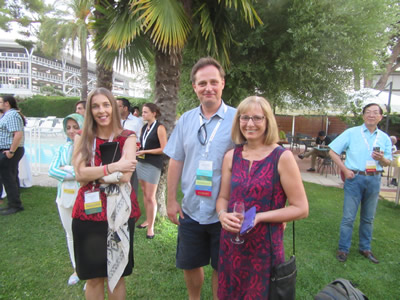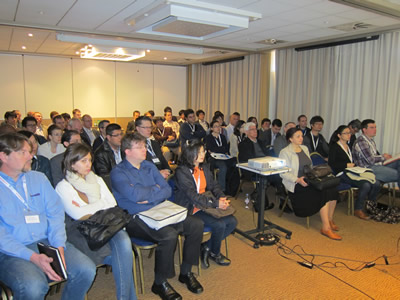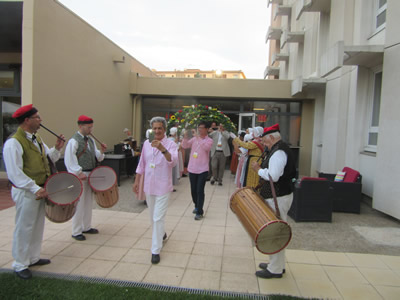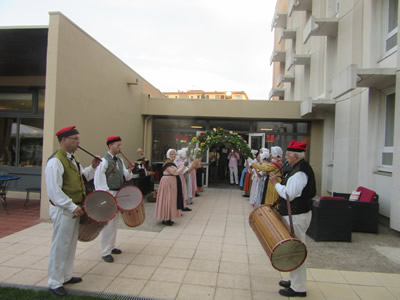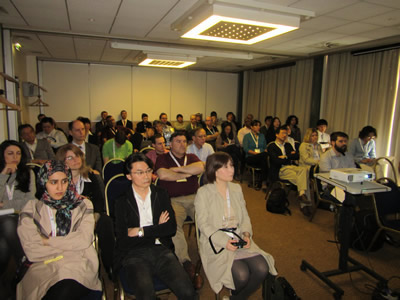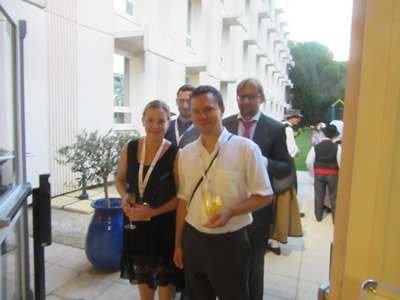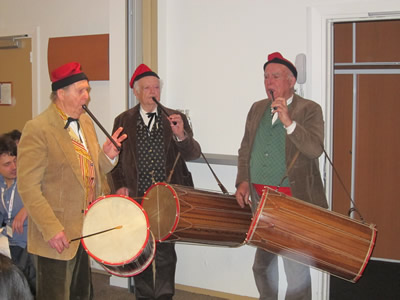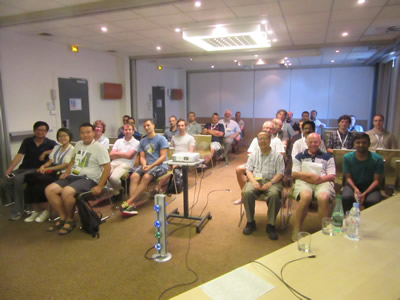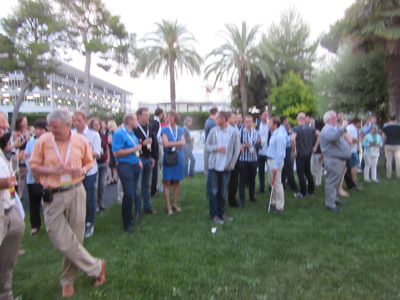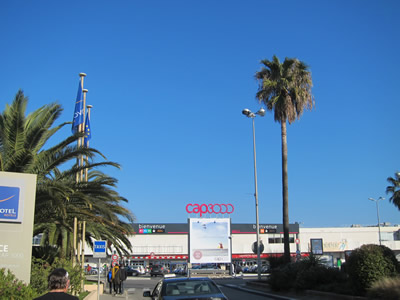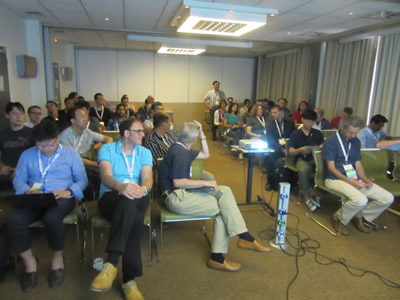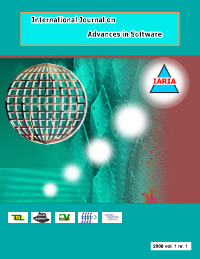VEHICULAR 2021 - The Tenth International Conference on Advances in Vehicular Systems, Technologies and Applications
July 18, 2021 - July 22, 2021
VEHICULAR 2021: Call for Papers
Onsite and Online Options: In order to accommodate a large number of situations, we are offering the option for either physical presence or virtual participation (pdf slides or pre-recorded videos).
Mobility brought new dimensions to communication and networking systems, making possible new applications and services in vehicular systems. Wireless networking and communication between vehicles and with infrastructure have specific characteristics from other conventional wireless networking systems and applications (rapidly-changing topology, specific road direction of vehicle movements, etc.). These led to specific constraints and optimizations techniques; for example, power efficiency is not as important for vehicle communications as it is for traditional ad hoc networking. Additionally, vehicle applications demand strict communications performance requirements that are not present in conventional wireless networks. Services can range from time-critical safety services, traffic management, to infotainment and local advertising services. They are introducing critical and subliminal information. Subliminally delivered information, unobtrusive techniques for driver’s state detection, and mitigation or regulation interfaces enlarge the spectrum of challenges in vehicular systems.
VEHICULAR 2021 continues the event considering the state-of-the-art technologies for information dissemination in vehicle-to-vehicle and vehicle-to-infrastructure and focusing on advances in vehicular systems, technologies and applications.
We solicit both academic, research, and industrial contributions. We welcome technical papers presenting research and practical results, position papers addressing the pros and cons of specific proposals, such as those being discussed in the standard fora or in industry consortia, survey papers addressing the key problems and solutions on any of the above topics short papers on work in progress, and panel proposals.
Industrial presentations are not subject to the format and content constraints of regular submissions. We expect short and long presentations that express industrial position and status.
Tutorials on specific related topics and panels on challenging areas are encouraged.
The topics suggested by the conference can be discussed in term of concepts, state of the art, research, standards, implementations, running experiments, applications, and industrial case studies. Authors are invited to submit complete unpublished papers, which are not under review in any other conference or journal in the following, but not limited to, topic areas.
All topics and submission formats are open to both research and industry contributions.
VEHICULAR 2021 conference tracks:
Hot topics in vehicular systems
Advanced vehicle safety systems; Driver assistance systems; Sensing, vision and perception; Human factors in urban traffic; Driver reactions and predictions; Driver tracking systems; Predict red-light running violations; Rear-view pedestrian detection; Urban truck energy-efficient driving systems; A priori map data; Multi-lane vehicular traffic models; Traffic signs-based fog density models; Social interaction and signaling; Collision avoidance systems; Driving in crowded scenes; Delay estimation; Advances in motorway traffic control; Traffic signal adaptive routing; Long-term trajectory predictions; Visual warnings and accident prevention; Head-up display; Speed harmonization; Vehicle-to-vehicle (V2V) communications; Unmanned ground vehicle paths; Free space detection; Autonomous vehicle in urban environments; Road side sensors; Automated vehicle operation; Motion planning; Navigation tracking; Urban traffic hotspots detection; Pedestrian walking activity recognition and prediction; Pedestrian and bicyclists safety; Evacuation dynamics; Sparse and noisy smartphone location data; Energy management for plug-in hybrid electric vehicles; Heavy-duty vehicles; Freeway traffic management; Adaptive video-streaming dissemination; Streaming content from a vehicular cloud; Wireless degrading communication sensing; Secure information transfer in V2V communication; Coordination of terrestrial vehicles and drones; Carsharing and charging stations; Real-time learning for incident prediction; Carpooling; Bottlenecks in massive crowd flow networks; Pollution models; Driving and urban planning
Fundamentals on communication and networking
Intelligent vehicular networking; Vehicular communications; Vehicular mobile ad hoc networks; Vehicle-to-infrastructure communications; Roadside-to-vehicle and vehicle-to-vehicle communication; Vehicle-to-vehicle communication; Cellular and satellite communications for vehicular systems; Cross-layer design and optimization for vehicular networks; Future vehicular systems; Vehicular applications
Protocols and mechanisms
Routing protocols for vehicle-to-vehicle communications; MAC layer technologies; Physical layer and RF level technologies; Algorithms, protocols and systems for data dissemination; Channel modeling; Modulation and coding; Multi-channel organization and operation; Antenna technologies; In-vehicle sensor networks
Vehicular data
Mining vehicular data; Vehicular data acquisition; Vehicular data analysis; Vehicular data dissemination; Vehicular datasets; Floating car data (FCD); Business models for vehicular data; Ownership of vehicular data; Vehicular data services; Vehicular data centers
Unmanned vehicles
Terrestrial unmanned vehicles; Unmanned aerial vehicles; Underwater unmanned vehicles; Unmanned sea surface vehicles; Collision control; Traffic surveillance challenges; Path planning and estimation; Communication between unmanned vehicles; Integration of unmanned aerial vehicles in civil airspace; Unmanned vehicular clusters; Designing unmanned vehicular-based systems; Safety of unmanned vehicles; Legal aspects of unmanned vehicular systems; Testbeds and pilot experiments.
Security
Embedded security; Automotive security; Secure automotive communication (on-board and off-board like V2X); Safety and security co-engineering; Tuning protection; Component protection; Vehicular integrity protection; Secure (over-the-air) update; Separation techniques for vehicular networks; Protection of the vehicular safety functionality; Immobilizers; Data privacy (of connected vehicles)
Evaluation
System evaluation methodologies; Performance characterization and analysis; Mobility analysis and vehicle traffic analysis; Safety and non-safety applications; Security issues and countermeasures; Privacy issues; Reliable and fast handover; Green vehicular communications and networking; Power control and scalability issues
Vehicle powering
Renewable energy and vehicles; Green cars; Biofuels; Electrical vehicles; Solar powering cars; Hybrid electric vehicles; Long-term car batteries; Hydrogen fuel cell vehicles; Residential charging stations; Dual-source energy storage
Management and tracking
Networks and systems management; High-speed mobility management; Radio resource, QoS support, and interference management; Channel management; Incident detection; Vehicle tracking
Subliminal characteristics
Driver-centric interfaces; Modalities for subliminal interfaces (visual, auditory, tactile/haptic, olfactory); Perception of subliminal information; Characteristics of subliminally delivered information; Unobtrusive techniques for driver’s state detection; Mitigation or regulation interfaces
Experiments and challenges
Simulation frameworks and real-world testbeds; Standardization in safe autonomous systems; Implementation of mobile IP and migration of IPv6; Testbed experiments and measurements; Business models and policies
Deadlines:
Submission | May 11, 2021 |
Notification | May 31, 2021 |
Registration | Jun 13, 2021 |
Camera ready | Jun 16, 2021 |
Deadlines differ for special tracks. Please consult the conference home page for special tracks Call for Papers (if any).
INSTRUCTION FOR THE AUTHORS
Authors of selected papers will be invited to submit extended versions to one of the IARIA Journals.
Publisher: XPS (Xpert Publishing Services)
Archived: ThinkMindTM Digital Library (free access)
Prints available at Curran Associates, Inc.
How to submit to appropriate indexes.
Only .pdf or .doc files will be accepted for paper submission. All received submissions will be acknowledged via an automated system.
Contribution types
- regular papers [in the proceedings, digital library]
- short papers (work in progress) [in the proceedings, digital library]
- ideas: two pages [in the proceedings, digital library]
- extended abstracts: two pages [in the proceedings, digital library]
- posters: two pages [in the proceedings, digital library]
- posters: slide only [slide-deck posted on www.iaria.org]
- presentations: slide only [slide-deck posted on www.iaria.org]
- demos: two pages [posted on www.iaria.org]
FORMATS
Only .pdf or .doc files will be accepted for paper submission. All received submissions will be acknowledged via an automated system.
Final author manuscripts will be 8.5" x 11", not exceeding 6 pages; max 4 extra pages allowed at additional cost.
Helpful information for paper formatting for MS Word can be found here.
There is a community provided LaTeX template: the CTAN package iaria (with full IARIA formatting rules, including IARIA citation style, but for providing citation style it is tightly bound to pdflatex+biblatex+biber). In addition, there is also iaria-lite (not bound to pdflatex+biblatex+biber, but compatible with any TeX stack; thus, it cannot provide the IARIA citation formattings, but only the titlepage and content-related IARIA formatting rules). Based on the iaria package, there is a minimal working example as Overleaf template. When you are using the LaTeX templates, please still adhere to the additional editorial rules.
Slides-based contributions can use the corporate/university format and style.
Your paper should also comply with the additional editorial rules.
Once you receive the notification of contribution acceptance, you will be provided by the publisher an online author kit with all the steps an author needs to follow to submit the final version. The author kits URL will be included in the letter of acceptance.
We would recommend that you should not use too many extra pages, even if you can afford the extra fees. No more than 2 contributions per event are recommended, as each contribution must be separately registered and paid for. At least one author of each accepted paper must register to ensure that the paper will be included in the conference proceedings and in the digital library, or posted on the www.iaria.org (for slide-based contributions).
CONTRIBUTION TYPE
Regular Papers (up to 6-10 page article -6 pages covered the by regular registration; max 4 extra pages allowed at additional cost- ) (oral presentation)
These contributions could be academic or industrial research, survey, white, implementation-oriented, architecture-oriented, white papers, etc. They will be included in the proceedings, posted in the free-access ThinkMind digital library and sent for indexing. Please submit the contributions following the instructions for the regular submissions using the "Submit a Paper" button and selecting the appropriate contribution type. 12-14 presentation slides are suggested.
Short papers (work in progress) (up to 4 pages long) (oral presentation)
Work-in-progress contributions are welcome. These contributions represent partial achievements of longer-term projects. They could be academic or industrial research, survey, white, implementation-oriented, architecture-oriented, white papers, etc. Please submit the contributions following the instructions for the regular submissions using the "Submit a Paper" button and selecting the contribution type as work in progress. Contributors must follow the conference deadlines, describing early research and novel skeleton ideas in the areas of the conference topics. The work will be published in the conference proceedings, posted in the free-access ThinkMind digital library and sent for indexing. For more details, see the Work in Progress explanation page. 12-14 presentation slides are suggested.
Ideas contributions (2 pages long) (oral presentation)
This category is dedicated to new ideas in their very early stage. Idea contributions are expression of yet to be developed approaches, with pros/cons, not yet consolidated. Ideas contributions are intended for a debate and audience feedback. Please submit the contributions following the instructions for the regular submissions using the "Submit a Paper" button and selecting the contribution type as Idea. Contributors must follow the conference deadlines, describing early research and novel skeleton ideas in the areas of the conference topics. The work will be published in the conference proceedings, posted in the free-access ThinkMind digital library and sent for indexing. For more details, see the Ideas explanation page. 12-14 presentation slides are suggested.
Extended abstracts (2 pages long) (oral presentation)
Extended abstracts summarize a long potential publication with noticeable results. It is intended for sharing yet to be written, or further on intended for a journal publication. Please submit the contributions following the instructions for the regular submissions using the "Submit a Paper" button and selecting the contribution type as Extended abstract. Contributors must follow the conference deadlines, describing early research and novel skeleton ideas in the areas of the conference topics. The work will be published in the conference proceedings, posted in the free-access ThinkMind digital library and sent for indexing. 12-14 presentation slides are suggested.
Posters (paper-based, two pages long) (oral presentation)
Posters are intended for ongoing research projects, concrete realizations, or industrial applications/projects presentations. The poster may be presented during sessions reserved for posters, or mixed with presentation of articles of similar topic. A two-page paper summarizes a presentation intended to be a POSTER. This allows an author to summarize a series of results and expose them via a big number of figures, graphics and tables. Please submit the contributions following the instructions for the regular submissions using the "Submit a Paper" button and selecting the contribution type as Poster Two Pages. Contributors must follow the conference deadlines, describing early research and novel skeleton ideas in the areas of the conference topics. The work will be published in the conference proceedings, posted in the free-access ThinkMind digital library and sent for indexing. 8-10 presentation slides are suggested. Also a big Poster is suitable, used for live discussions with the attendees, in addition to the oral presentation.
Posters (slide-based, only) (oral presentation)
Posters are intended for ongoing research projects, concrete realizations, or industrial applications/projects presentations. The poster may be presented during sessions reserved for posters, or mixed with presentation of articles of similar topic. The slides must have comprehensive comments. This type of contribution only requires a 8-10 slide-deck. Please submit the contributions following the instructions for the regular submissions using the "Submit a Paper" button and selecting the contribution type as Poster (slide-only). The slide-deck will be posted, post-event, on www.iaria.org.
8-10 presentation slides are suggested. Also a big Poster is suitable, used for live discussions with the attendees, additionally to the oral presentation.
Presentations (slide-based, only) (oral presentation)
These contributions represent technical marketing/industrial/business/positioning presentations. This type of contribution only requires a 12-14 slide-deck. Please submit the contributions following the submission instructions by using the "Submit a Paper" button and selecting the contribution type as Presentation (slide-only). The slide-deck will be posted, post-event, on www.iaria.org.
12-14 presentation slides are suggested.
Demos (two pages) [posted on www.iaria.org]
Demos represent special contributions where a tool, an implementation of an application, or a freshly implemented system is presented in its alfa/beta version. It might also be intended for thsoe new application to gather the attendee opinion. A two-page summary for a demo is intended to be. It would be scheduled in special time spots, to ensure a maximum attendance from the participants. Please submit the contributions following the submission instructions by using the "Submit a Paper" button and selecting the contribution type as Demos. The Demos paper will be posted, post-event, on www.iaria.org.
Tutorial proposals
Tutorials provide overviews of current high interest topics. Proposals should be for 2-3 hour long. Proposals must contain the title, the summary of the content, and the biography of the presenter(s). The tutorial slide decks will be posted on the IARIA site.
Please send your proposals to tutorial proposal
Panel proposals
The organizers encourage scientists and industry leaders to organize dedicated panels dealing with controversial and challenging topics and paradigms. Panel moderators are asked to identify their guests and manage that their appropriate talk supports timely reach our deadlines. Moderators must specifically submit an official proposal, indicating their background, panelist names, their affiliation, the topic of the panel, as well as short biographies. The panel slide deck will be posted on the IARIA site.
Please send your proposals to panel proposal

